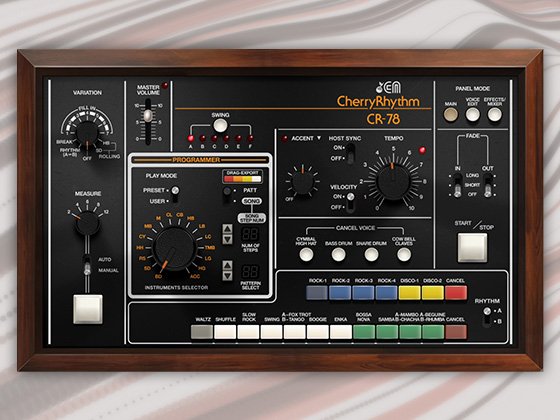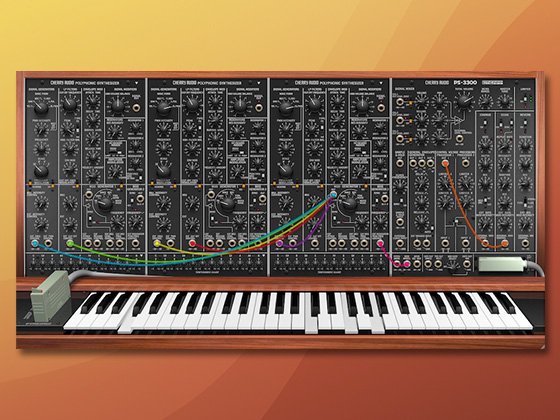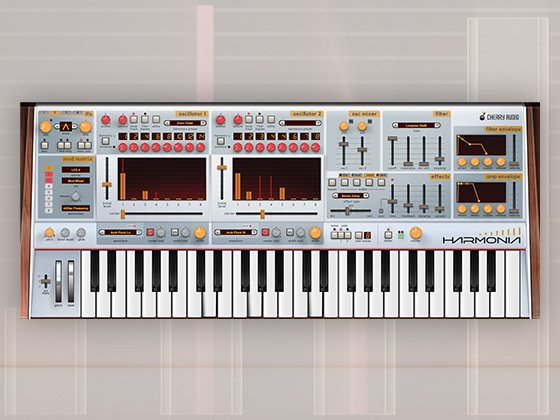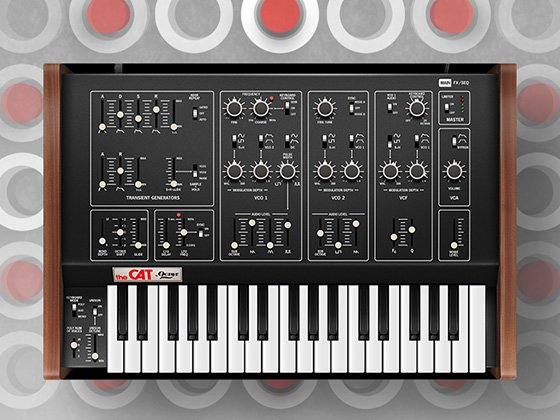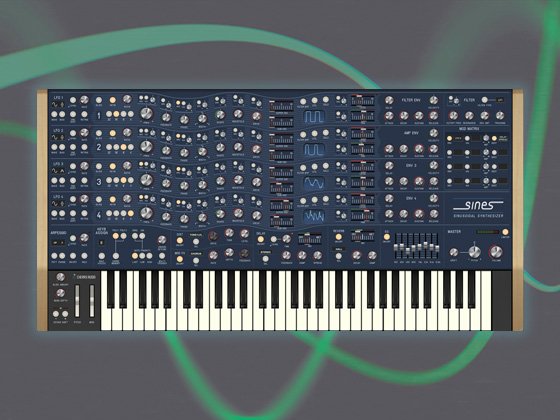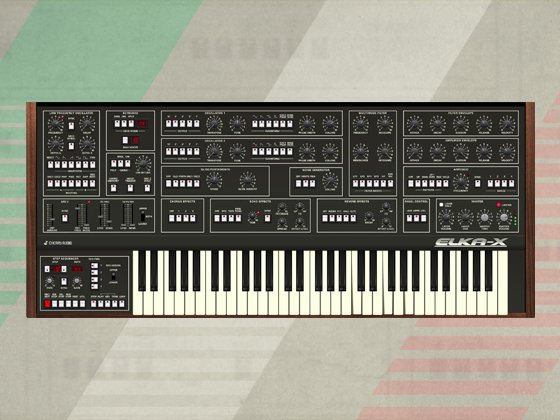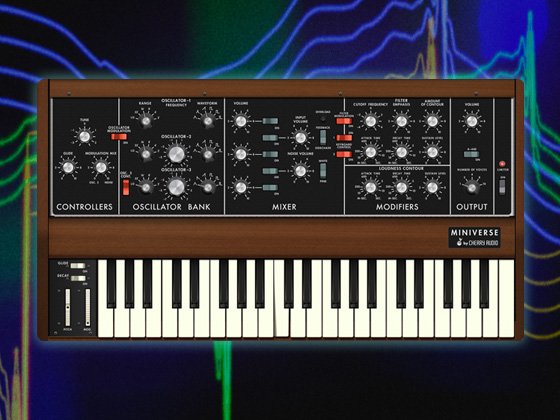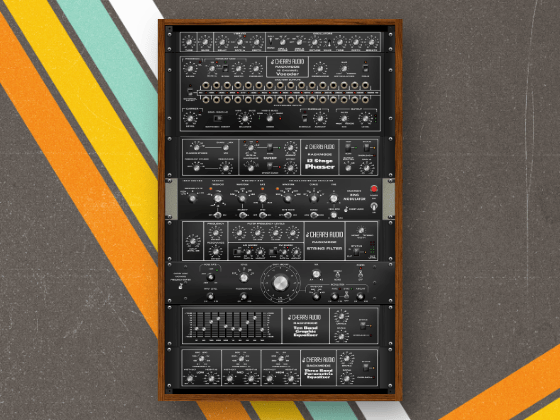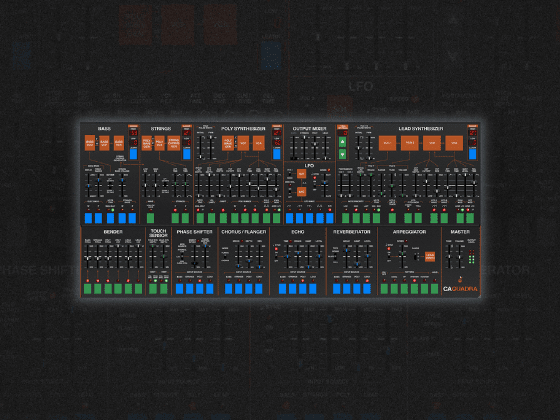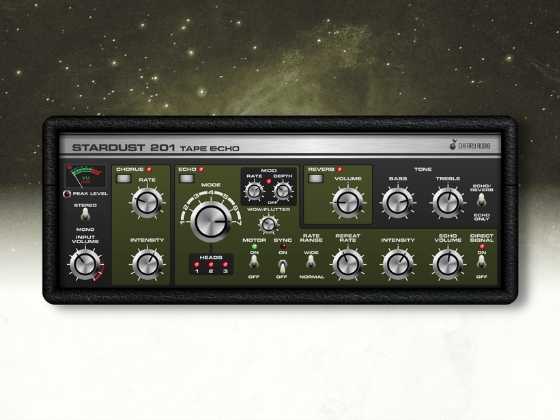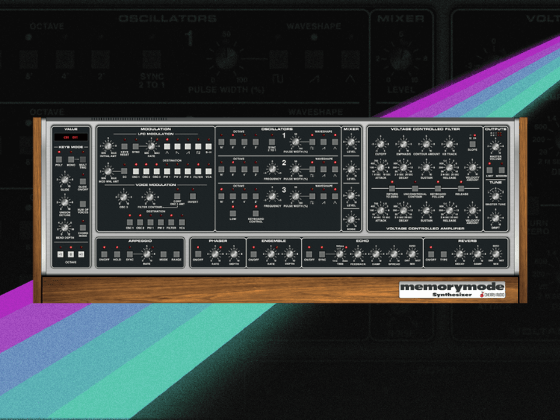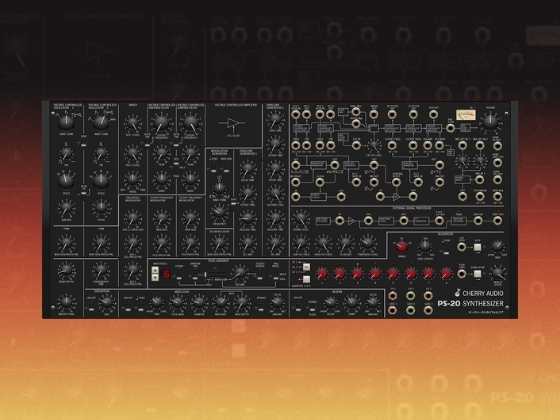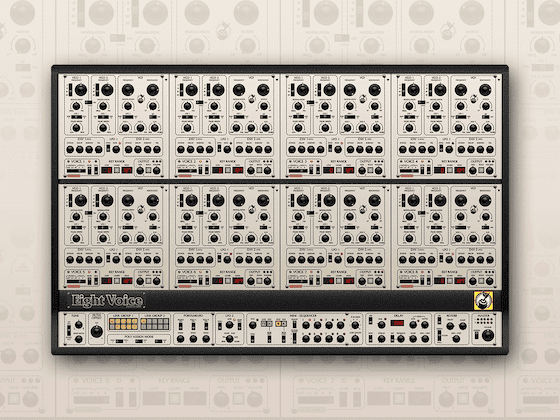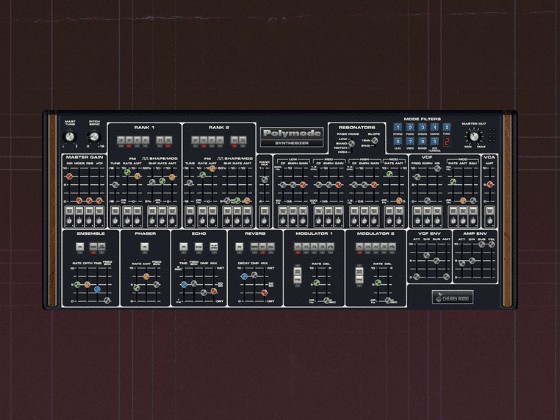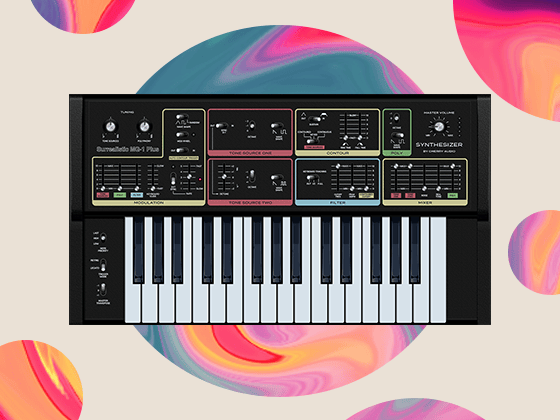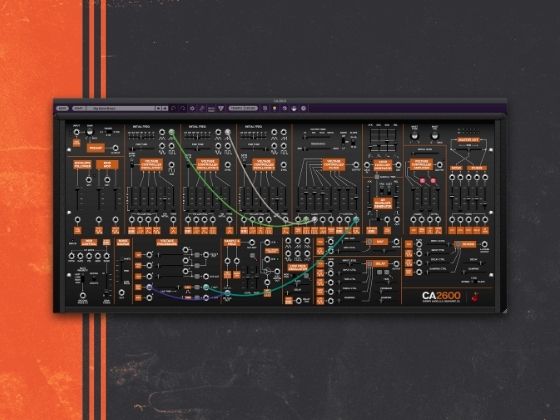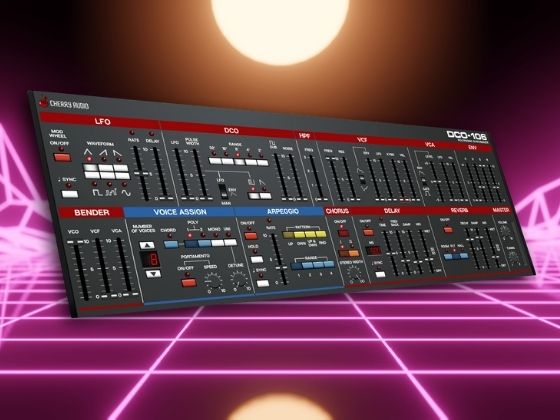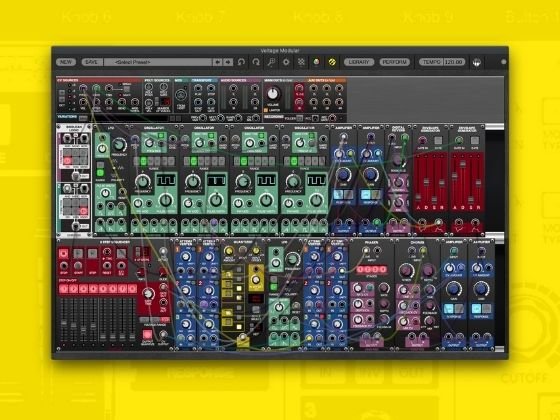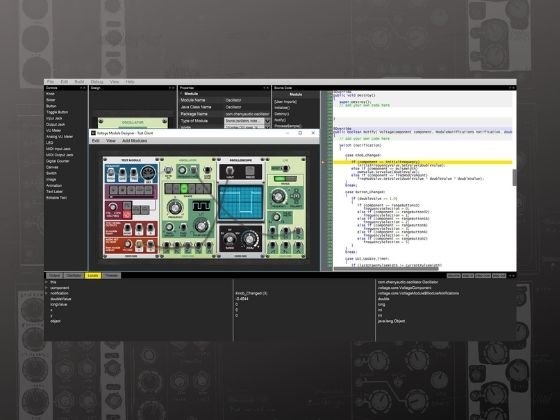Manufacturer: Cyberwerks Heavy Industries
$10.00
Variable Delay
Overview
Variable Delay consists of eight modulable delay lines good for delays from 0 to 262,144 samples, or, put another way, from zero to 5460 milliseconds. You can view and edit each channel's delay length either way by clicking on the Display Window; black text is in samples, and purple text is in milliseconds. To change the channel being shown in the display, just left-click on either of that channel's knobs.
If you supply a CV signal to the CV Input Jack (the second one), you can top-down modulate the delay length. The adjacent CV Depth Knob controls how wide the modulation is, from none, to potentially all the way down to zero. You can supply inputs and take outputs from either the mono jacks or the poly jacks at the top of the module. If the poly input is populated, it will supply the input for all channels, save for those whose mono jacks are also populated; in that case, the mono signal takes precedence.
You can also type in captions above the channels; if the yellow caption fields aren't visible, click on the Caption Toggle to show them, then double-click on any of them and edit. Clicking the toggle again hides any caption with no text (even blanks) present while leaving the edited ones visible. The Clr Capt Button will delete the text from all eight captions; it's red to remind you that its action is irreversible.
Variable Delay lets you do pretty much anything that's doable with a modulable delay line, making it the heart of patches that emulate reverbs, vibratos, echoes, flangers, and choruses.
The help you're currently reading is always available within the module by clicking on the Cyberwerks name at the bottom of the module; in Windows the four help screens can also be displayed by pressing h, ctrl-shift-h, ctrl-alt-h, and alt-h with the module selected; in MacOS the equivalents are F1, cmd-shift-F1, cmd-option-F1, and option-F1.
Controls
-
The Poly In Jack supplies input for all channels, using lines 0-7. If the mono Input Jack for any channel is also populated, it will take precedence for that channel.
-
The Poly CV In Jack supplies CV modulation signals for all channels, using lines 0-7. If the mono CV Input Jack for any channel is also populated, it will take precedence for that channel.
-
The Poly Out Jack outputs the delayed signal from all channels, using lines 0-7. If the mono Output Jack for any channel is also populated, it will also output the appropriate signal.
-
The Display Window shows the delay setting for the current channel (set by left-clicking on one of the two knobs for that channel), either in samples (1/48000 s) or in milliseconds. Clicking on the window toggles between the two modes.
-
The Caption Button displays the channel labels, and hides those without text.
-
The Clear Caption Button clears the text from all eight channel labels. It's red to remind you that this is an irreversible action.
-
Channel Controls (identical for the eight channels):
-
- The Input Jack supplies the input for its channel, overriding any input from the Poly In Jack.
- The Delay Time Knob sets the length of the channel delay in samples or milliseconds, depending on the current mode set by the Display Window.
- The CV Input Jack supplies a modulation control signal for the channel. This signal should be a bipolar signal in the range [-5V, 5V] (see the Usage Notes for more on this).
- The Depth Knob sets the percentage of the total delay time CV modulation can vary over, counting from the value set by the Delay Time Knob downward. It also has the effect of setting the center of the modulation, halfway between the bottom and the top of this range.
- The Output Jack outputs the delayed signal for the channel. This is in addition to the signal sent through the Poly Output Jack.
Menus
The Main Menu, accessible by left-clicking on the Cyberwerks name at the bottom of the module, gives you access to the help you're reading now, and the About Dialog.
There is also a secondary menu, accessible by left-clicking any of the white channel numbers. Exactly what each of the nine choices does is partially dependent on which number you clicked, as that determines the source channel for each choice. The first choice is to copy the channel you clicked on to all other channels.
The other choices all boil down to copying the clicked-on channel to another channel, determined by the specific command.
Usage Notes
You'll find Variable Delay more useful if you keep in mind the way the modulation works. The setting of the channel's CV Knob determines how much range the modulation covers, from none to 100% of the delay set by the channel's Delay Knob, always counted from the top down. So, for instance, if you set it to 30%, the possible range of modulation will be between 70% of the delay time to the entire time, with the center of modulation at 85%. If your CV signal actually has positive and negative peaks at the full -5V and 5V limits of the input, the modulation will take up the entire 30% of possible range. If it's greater, it will be clipped to that range. However, if you use some external means, like an attenuverter, to reduce the CV input signal, the modulation will take a smaller portion of the available range, centered on the midpoint established by the CV Knob. Thus, in our example, if the input signal is reduced externally to the range [-2.5V, 2.5V], the modulation will still center at 85%, but will only extend from 77.5% to 92.5%. This may sound confusing, but a little experimentation should make it clear.
Note that the module itself, like any Voltage Modular module, contributes one sample of latency on top of the dialed-in setting.


























